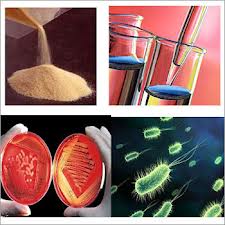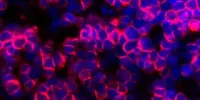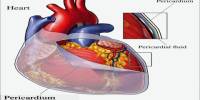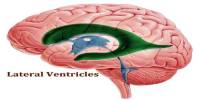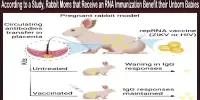The role of suitable quality culture media for cultivation of microorganisms cannot be over emphasised. On it depends the very success of isolation of aetiological agents. Only in exceptional cases, can an organism be identified on the basis of its morphological characteristics alone.
Bacteriological Media:
Bacterial media can be classified into 3 classes
1. Solid media or nutrient agar media
2. Liquid or broth media
3. Semisolid media
Application & Classification:
Bacteriological media can be sub-divided into the following categories depending on their application.
(a) Cultivation media
(b) Storage media
(c) Enrichment media
(d) Differential media
(e) Assay media
(f) Maintenance media
(a) Cultivation media
Medium which is used for the general cultivation of bacteria. Example: Nutrient broth, Nutrient agar, infusion broth and lysate media.
(b) Storage media
Medium in which bacteria are stored in “stock culture” condition for longer periods to provide a source of viable cultures are called storage medium. Example: Yeast extract mannitol agar medium.
(c) Enrichment media
Enriched medium (enrichment medium) is that in which nutritional environment is adjusted in such manner as to enhance selectively the growth of a certain bacterial type within a given mixed inoculum. This approach constitutes a powerful tool for the bacteriologist in the isolation and identification of pure cultures from an initially mixed population of bacteria.
Example: Addition of extracts of plant or animal tissues to Nutrient broth or Nutrient agar media provides additional nutrients and the media start favouring the growth of fastidious heterotrophic bacteria.
(d) Differential and selective media:
Medium employed to determine differential reactions which may permit presumptive identification of bacterial species is called differential medium. Blood agar medium is a good differential medium. If a mixture of bacteria is inoculated on a Blood agar medium, some of the bacteria may hemolyze (destroy) the red blood cells while others do not show hemolytic reactions.
The observer may see a clear zone of hemolyzed red blood cells around certain colonies of bacteria while the non-hemolyzed bacterial colonies do not develop such a clear zone around them. Differential media have got some chemical constituents which characterize different bacteria by their special colonial appearances in the culture e.g. MacConkey agar contains lactose as a substrate and neutral red as an indicator. Bacteria fermenting lactose produce acid and this will change the colour of the indicator and thus the colonies will turn red. The red lactose fermenting colonies can be differentiated from the pale non-lactose fermenting colonies.
e) Assay media.
Certain media of prescribed composition have profound influence on the bacterial cells with respect to formation of enzymes, toxins, antibiotics and other products. Such media are called assay media or media for special purposes.
An “assay” represents analysis to determine the presence, absence, or quantity of one or more components. Example: Pyridoxine deficient growth medium for Streptococcus faecalis which yields cells containing large amounts of tyrosine decarboxylase apoenzyme.
(f) Maintenance media.
These media are different from growth media and are required to maintain the viability and physiological characteristics of bacteria.
Preparation of bacterial media:
Nutrient broth:
Meat extract 10.0 gm
Peptone 10.0 gm
Sodium chloride 5.0 gm
Distilled water 1000 ml
Mix the ingredients and dissolve them by heating in a steamer. When cool, adjust the pH to 7.5-7.6.
Nutrient agar:
To the ingredients as in nutrient broth, add 15 gm agar per litre. Dissolve the agar in nutrient broth and sterilize by autoclaving at 121oC for 15 minutes. Prepare plates and slopes as required.
Blood agar:
Nutrient agar 100 ml
Sheep blood (defibrinated) 10 ml
Melt the sterile nutrient agar by steaming, cool to 45oC.
Add required amount of sheep blood aseptically with constant shaking.
Mix the blood with molten nutrient agar thoroughly but gently, avoiding froth formation.
Immediately pour into petri dishes or test tubes and allow to set.
